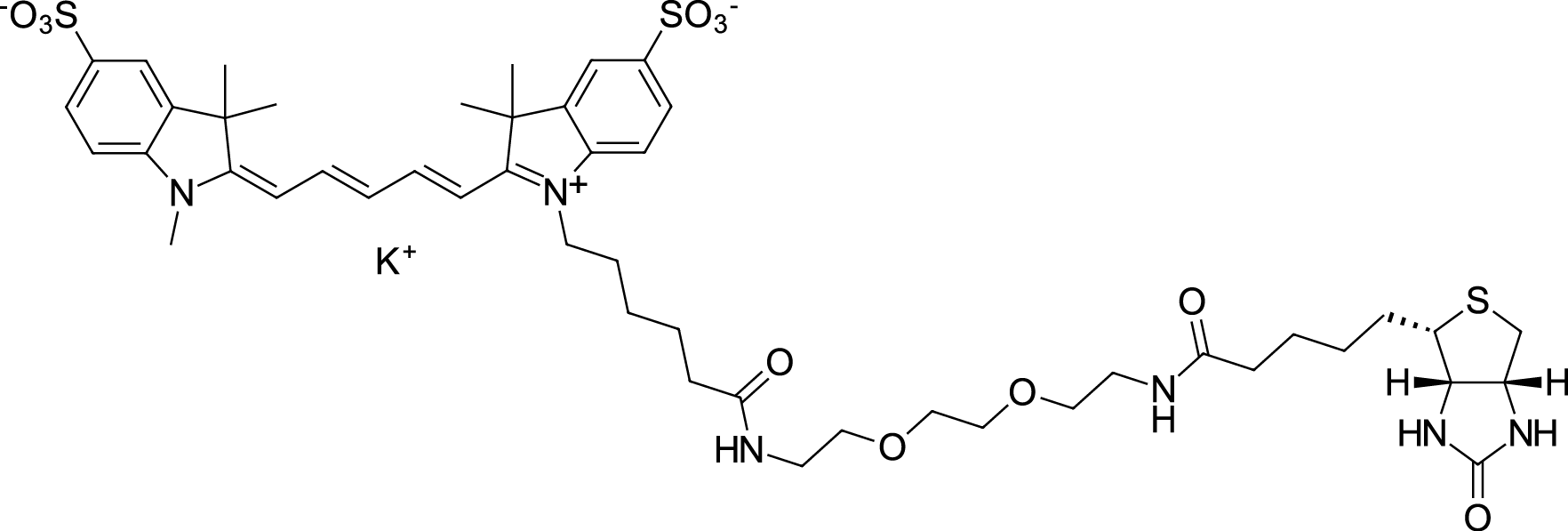Labeling & Detection
- Cyanine Dyes(228)
- Others(3)
- Affinity Probes(6)
- Dyes, Stains & Indicators(53)
- Enzyme Substrates(58)
- Fluorescence(215)
- Reactive Probes(28)
Produkte für Labeling & Detection
- Bestell-Nr. Artikelname Informationen
-
GC47685
MIT-PZR
A mitochondria-targeted fluorescent probe

-
GC44198
MitoA
MitoA is a ratiometric mass spectrometry probe that can be used for assessing changes in H2S within mitochondria in vivo.

-
GC44199
MitoB
MitoB is a ratiometric mass spectrometry probe that can be used for assessing changes in H2O2 within mitochondria in vivo.

-
GC44201
MitoP
MitoP is a phenol product produced by the reaction of H2O2 with the ratiometric mass spectrometry probe MitoB.

-
GC44203
MitoPerOx
MitoPerOx ist eine fluoreszierende Ratio-Sonde der Lipidperoxidation.

-
GC45744
monoMICAAc
A solvatochromic fluorescent pH probe

-
GC44253
MTSEA-biotin
MTSEA-biotin is a thiol-reactive probe that can be used to label proteins at cysteine residues.

-
GC44254
MTSES
Methanethiosulfonates (MTS) are sulfhydryl-reactive compounds that form mixed disulfide linkages and are commonly used to study cysteine residues on proteins.

-
GC44255
MTSET (chloride)
MTSET (chloride) is a methanethiosulfonate (MTS), a sulfhydryl-reactive compound that forms mixed disulfide linkages.

-
GC18465
MTSSL
MTSSL is a paramagnetic nitroxide spin label featuring a methanethiosulfonate group for site-directed spin labeling, particularly through disulfide linkages with cysteine residues on proteins.
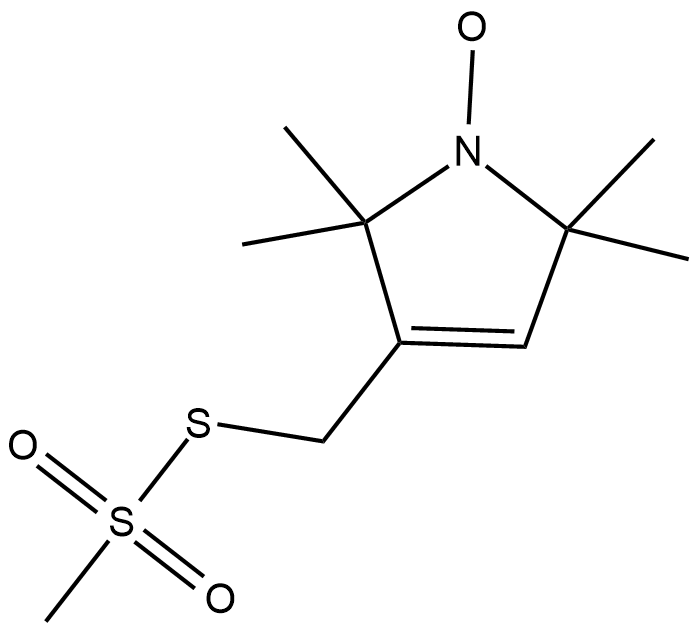
-
GC40683
N-(2-hydroxyethyl)-Naphthalimide
N-(2-hydroxyethyl)-Naphthalimide is an N-substituted 1,8-naphthalimide used as a fluorescent probe and as a precursor for protection of amine groups.

-
GC65216
N-(Diphenylmethylene)glycine tert-butyl ester
N-(Diphenylmethylen)glycin-tert-butylester ist ein Farbstoff, auch als Roh- und Zwischenprodukt fÜr organische Synthesen.
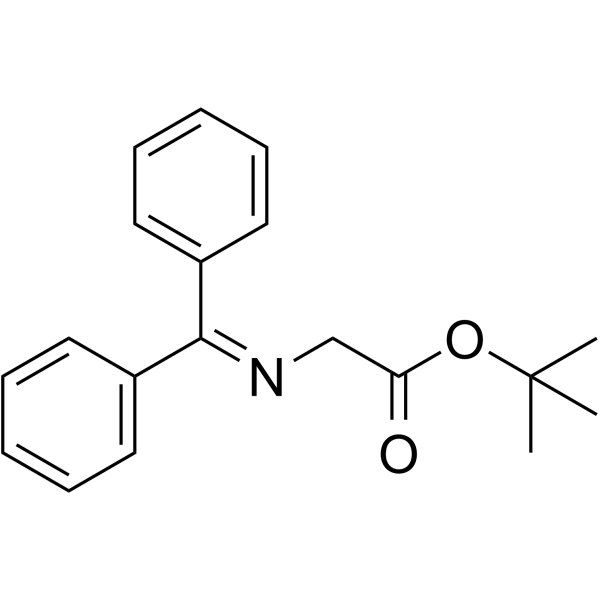
-
GC45667
N-(p-Tosyl)-GPR-pNA (acetate)
A colorimetric thrombin substrate

-
GC44333
N-Butylfluorescein
N-Butylfluorescein ist ein Alkyl-substituiertes Fluorescein, das zur Synthese von fluorogenen Substraten zum Testen der Phosphatidylinositol-spezifischen Phospholipase C verwendet werden kann.

-
GC44396
N-Hippuryl-His-Leu (hydrate)
N-Hippuryl-His-Leu (hydrate) is a synthetic substrate for angiotensin-converting enzyme (ACE) that has been used in the in vitro identification of ACE inhibitors.,

-
GC47806
N-p-Tosyl-Gly-Pro-Lys-pNA (acetate)
A colorimetric plasmin substrate

-
GC44285
N1-Acetylspermine (hydrochloride)
N1-Acetylspermine is a monoacetylated derivative of spermine, an endogenous polyamine synthesized from spermidine, that displays lower Km and higher Vmax values than spermine, making it a better substrate of polyamine oxidase than the non-acetylated polyamine.

-
GC47739
NADH (sodium salt hydrate)
A reduced form of NAD+

-
GC44314
Naphthol AS-BI-Phosphate
Naphthol AS-BI-phosphate is a fluorogenic substrate for acid and alkaline phosphatases.

-
GC44322
NBD Sphingosine
NBD-Sphingosin (NBD-Sph), ein Fluorochrom, ist ein fluoreszenzmarkiertes Sphingosin.

-
GC45521
NBD-Fructose

-
GC65129
NBD-X, SE
NBD-X, SE, der Akzeptor-Fluorophor, kann verwendet werden, um umgebungssensitive Bio-Konjugate zu erstellen.
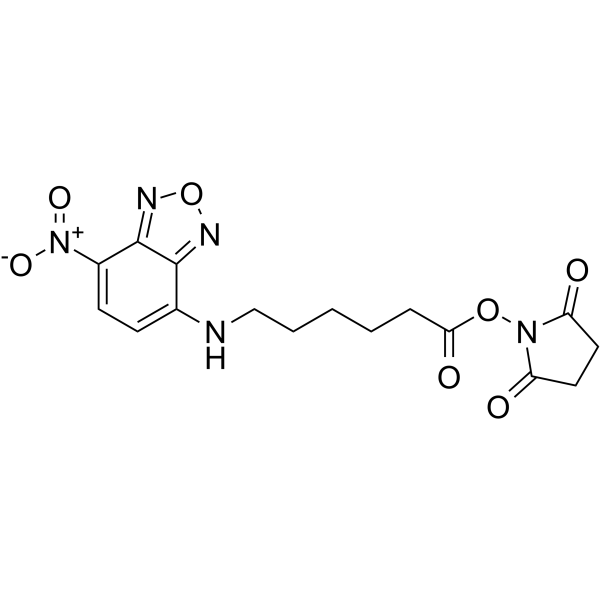
-
GC18360
NFF-3
NFF-3 is a fluorogenic substrate of matrix metalloproteinases (MMPs).
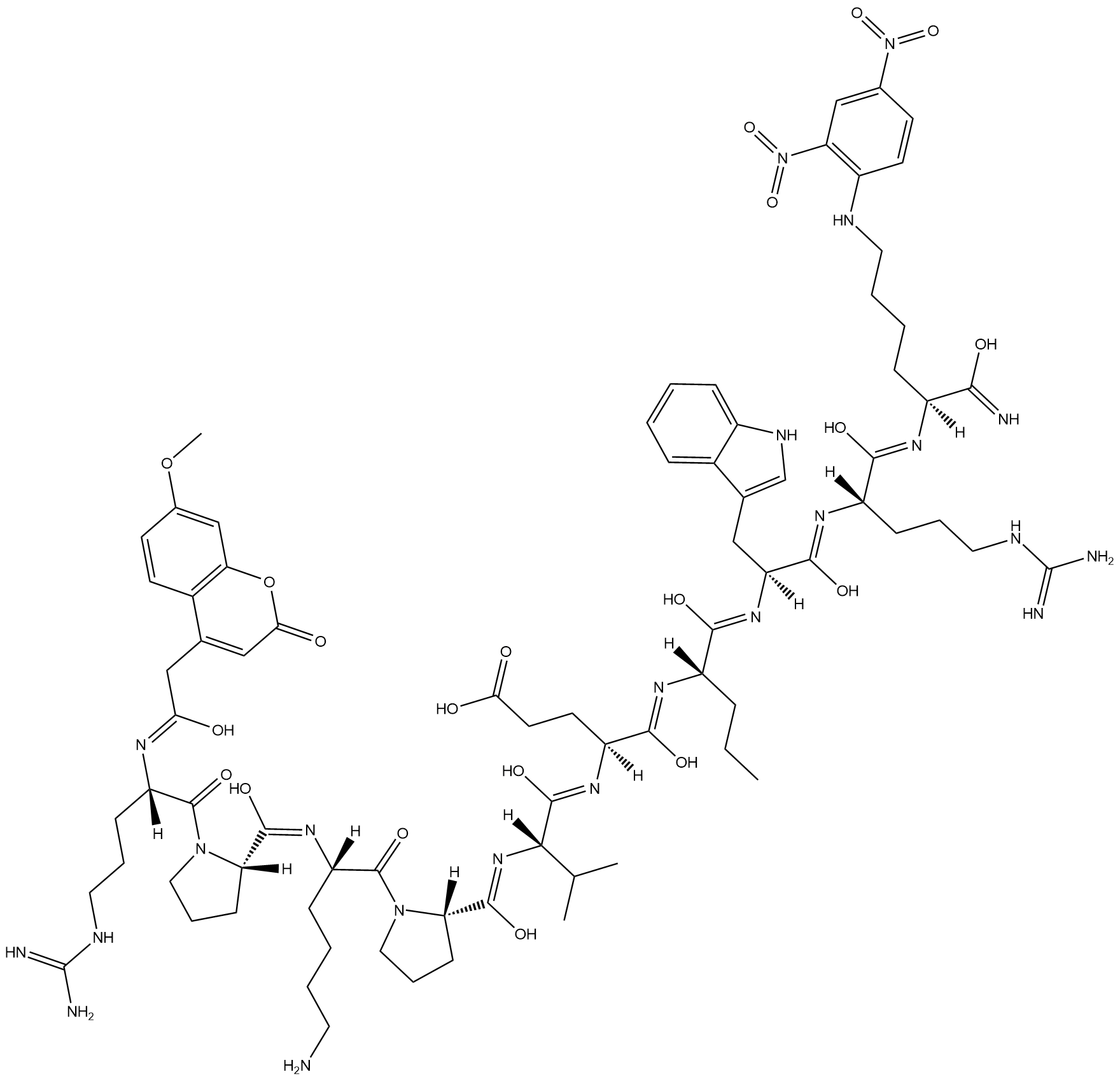
-
GC44399
NIAD-4
NIAD-4 is a fluorescent probe that crosses the blood-brain barrier to bind with high affinity to amyloid-β (Aβ) plaques (Ki = 10 nM).

-
GC49501
Nirvanol
An active metabolite of mephenytoin

-
GC14823
Nitrocefin
Nitrocefin ist ein chromogenes β-Lactamase-Substrat, das einen deutlichen Farbwechsel von gelb nach rot erfÄhrt, wenn die Amidbindung im β-Lactam-Ring durch β-Lactamase hydrolysiert wird.
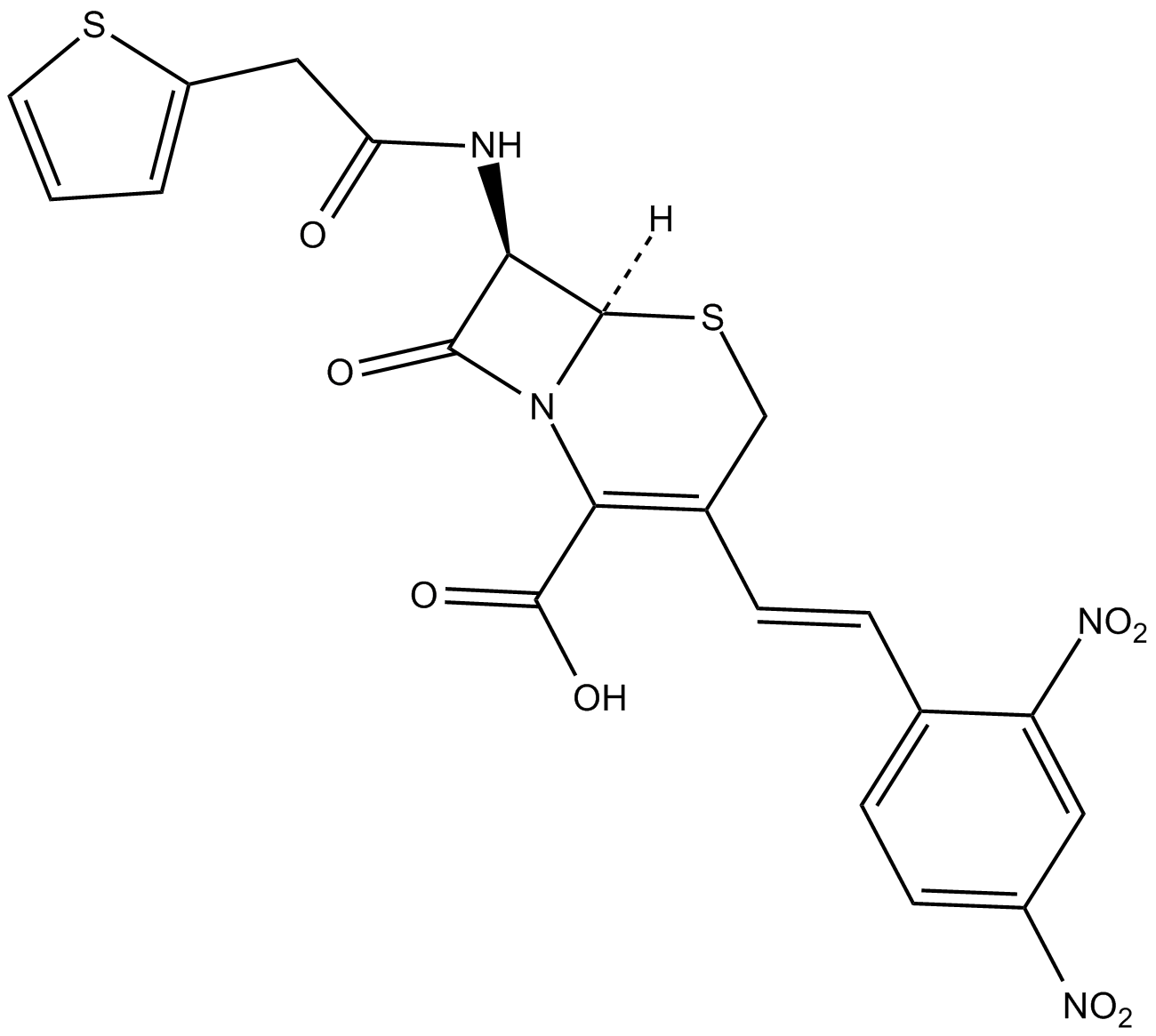
-
GC44511
O-Phospho-L-Tyrosine
O-Phospho-L-tyrosine is a phosphorylated form of L-tyrosine.

-
GC64502
Octadecyl Rhodamine B chloride
Octadecyl-Rhodamin-B-Chlorid ist ein kationisches Amphiphil, das zum FÄrben von Zellmembranen verwendet werden kann.
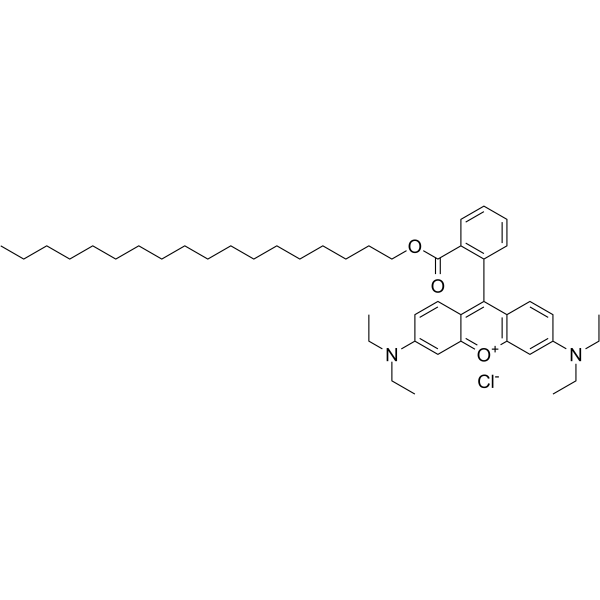
-
GC25676
Oil Red O
Oil Red O is a red neutral lipid droplet stain.
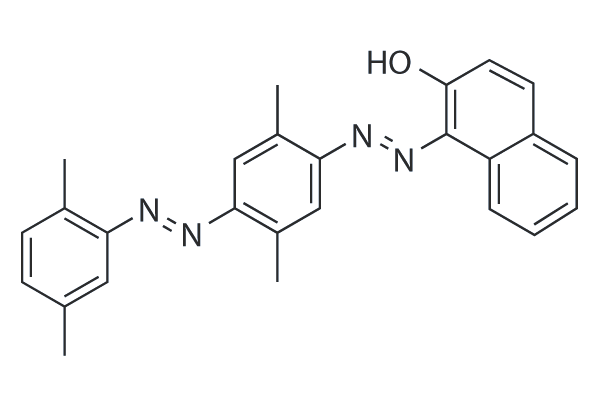
-
GC49621
Oregon Green™ 488
A fluorinated fluorescein dye
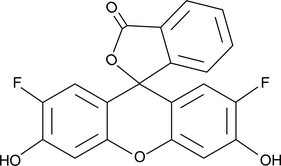
-
GC44664
p-Nitrophenylphosphorylcholine
p-Nitrophenylphosphorylcholin ist ein chromogener Substrat, das zur Messung der Phospholipase-C-Aktivität (PLC) verwendet wird.

-
GC64827
Pafolacianine
Pafolacianin (OTL 38) ist ein fluoreszierender Marker aus Nahinfrarotfarbstoff, der zum Nachweis von EierstockkrebslÄsionen wÄhrend chirurgischer Eingriffe verwendet wird.
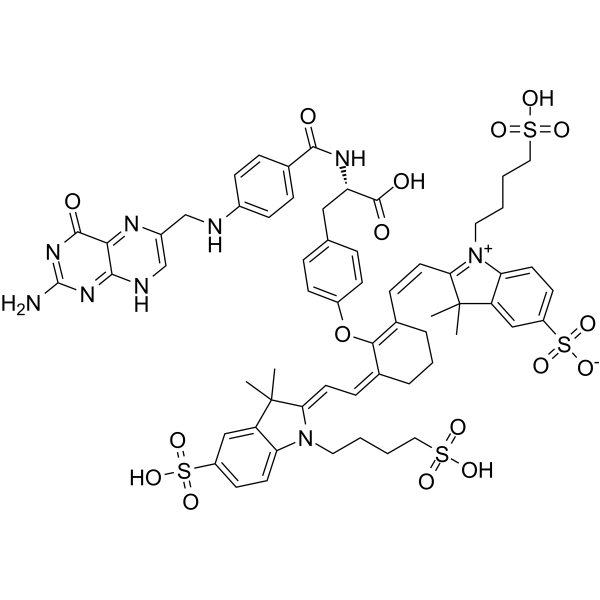
-
GC44574
PBD-BODIPY
PBD-BODIPY is a probe for the spectrophotometric measurement of autoxidation reactions.

-
GC18477
PBFI AM
PBFI AM ist ein nützliches Werkzeug zur Bestimmung des intrazellulären K+-Gehalts.
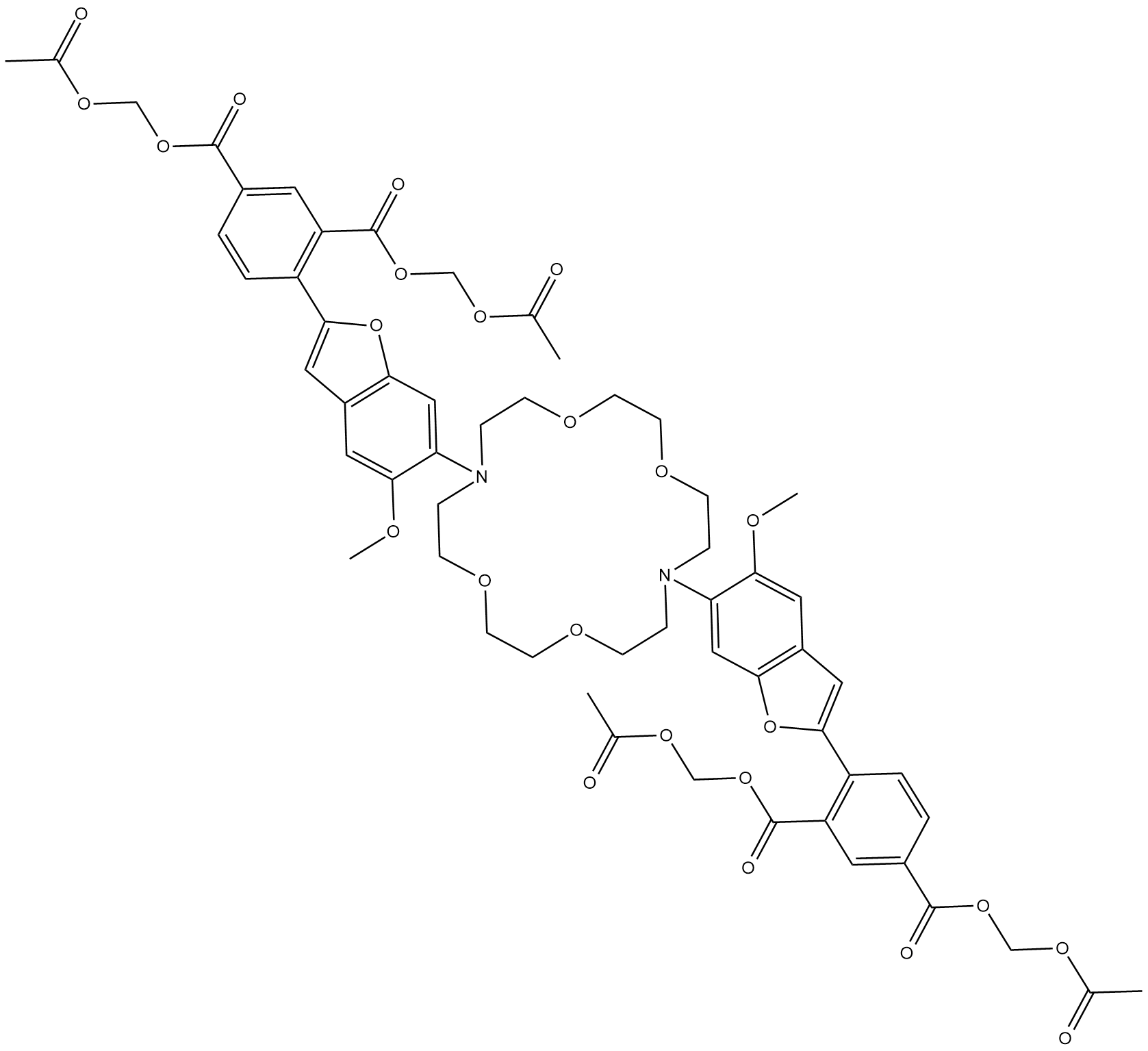
-
GC44618
Phalloidin-AMCA Conjugate
Phalloidin-AMCA conjugate is a blue fluorophore that specifically labels filamentous actin (F-actin).

-
GC44620
Phalloidin-Tetramethylrhodamine Conjugate
Phalloidin-retramethylrhodamine conjugate is an orange fluorescent probe (ex/em = 546/575 nm) that selectively binds to F-actin.

-
GC40243
Phen Green SK diacetate
Phen green SK (PGSK) Diacetat ist ein fluoreszierender Schwermetall-Indikator, der mit verschiedenen Metallionen reagiert, einschließlich Fe2+, Cd2+, Co2+, Ni2+ und Zn2+.

-
GC65334
Phenosafranine
Phenosafranin ist ein Phenazin-Farbstoff.
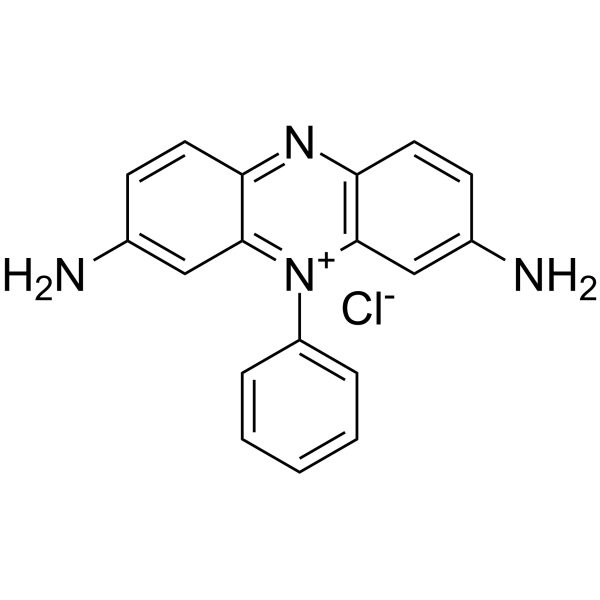
-
GC40883
PHOME
PHOME ist ein fluorogenes Substrat fÜr sEH.

-
GC44634
Phosphine-biotin
Labeling reactive centers of various types in cells with specific site-directed probes is a common method to explore both function and biochemical modification of proteins.

-
GC44670
PPA
PPA ist ein ADC-Linker (US20060073528A1). PPA kann zur Herstellung von AntikÖrper-Wirkstoff-Konjugat verwendet werden.

-
GC44672
PPHP
PPHP is a substrate for the measurement of peroxidase enzymes.

-
GC45680
Prodan
Prodan, ein solvatochromer Fluorophor, wurde als mikroumgebungsempfindlicher Membranreporter verwendet.

-
GC49691
PSP
A two-photon fluorescent probe for H2Sn

-
GC60313
Py-BODIPY-NHS ester
Py-BODIPY-NHS-Ester ist eine zelldurchlÄssige und fluoreszierende EnergieÜbertragungssonde. Py-BODIPY-NHS-Ester-Tracer ergibt eine starke zellulÄre Bindung und erweist sich als optimal fÜr MET-Kinase. Die Live-Cell-Energietransfertechnik kann eine breit angelegte, quantitative Analyse der intrazellulÄren Kinase-Target-Beteiligung durchfÜhren.
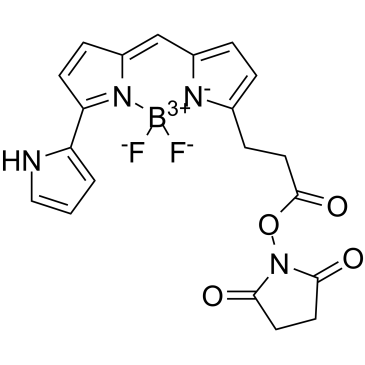
-
GC44796
Quin-2 (potassium salt)
Quin-2 is a high-affinity fluorescent calcium indicator (Kd = 115 nM for calcium).

-
GC46210
Quinacrine mustard (hydrochloride)
Chinacrin-Senf (Hydrochlorid) ist ein Fluorochrom.

-
GC44808
ReAsH-EDT2
ReAsH-EDT2 ist ein rot fluoreszierender Farbstoff, der Proteine markiert.

-
GC44812
Renin Fluorogenic Substrate
The renin fluorogenic substrate consists of the normal peptide substrate for renin which has been linked to the fluorophore EDANS at one end and to a non-fluorescent quenching molecule (Dabcyl) at the other.

-
GC45556
Resorufin β-D-Galactopyranoside

-
GC18570
Resorufin Acetate
Resorufin Acetate is a fluorometric probe that acts as a substrate for cytosolic aldehyde dehydrogenase (ALDH1A1) esterase activity.
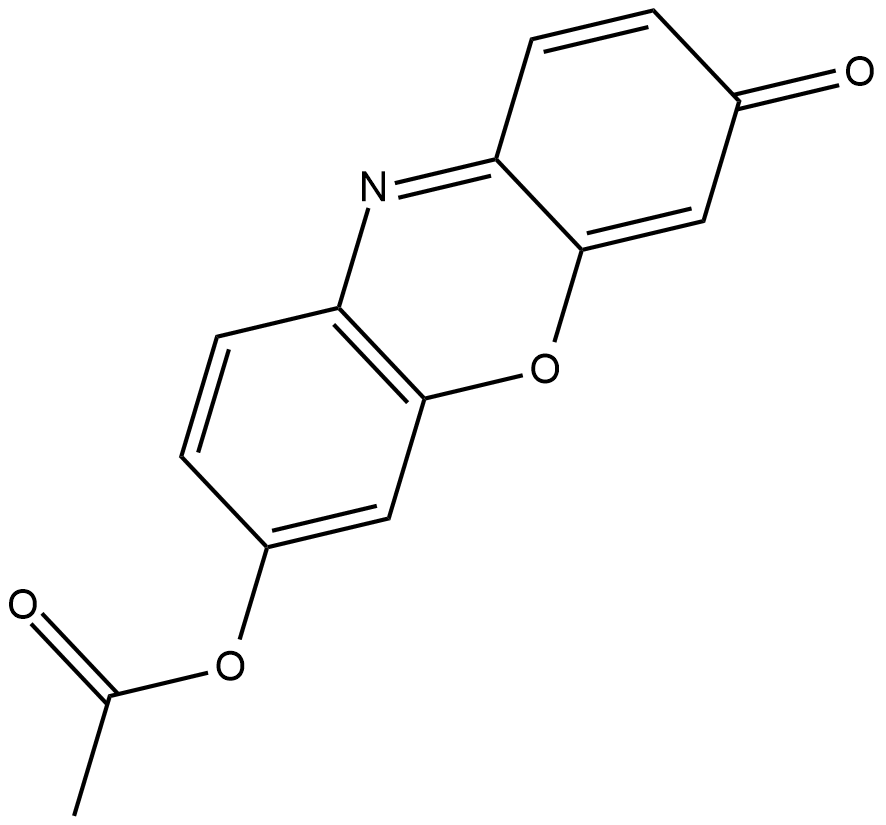
-
GC41615
Resorufin butyrate
Resorufinbutyrat ist ein fluorogenes Substrat fÜr Triglyceridlipasen und Cholinesterase (Ex=570 nm, Em=580 nm).

-
GC44827
Rhod-2 (potassium salt)
Rhod-2 (potassium salt) is a water-soluble, red fluorescent calcium indicator.

-
GC44828
Rhod-2 (sodium salt)
Rhod-2 (sodium salt) is a water-soluble, red fluorescent calcium indicator.

-
GC44829
Rhod-5N (potassium salt)
Rhod-5N is a low affinity fluorescent calcium probe (Kd = 320 μM).

-
GC44830
Rhod-5N AM
Rhod-5N AM is a cell-permeant acetoxymethyl ester of the fluorescent calcium indicator rhod-5N.

-
GC44834
Rhod-FF (potassium salt)
Rhod-FF is a difluorinated analog of the cell-impermeant calcium indicator rhod-2.

-
GC44835
Rhod-FF AM
Rhod-FF AM is a cell-permeant acetoxymethyl ester of the fluorescent calcium indicator rhod-FF.

-
GC44831
Rhodamine 101 (inner salt)
Rhodamine 101 (inner salt) is a bright fluorescent dye with excitation and emission maxima of 565 and 595 nm, respectively.

-
GC44832
Rhodamine B hydrazide
Rhodamine B hydrazide is a water-soluble fluorescent probe with excitation/emission spectra of 510/578 nm, respectively.

-
GC44833
Rhodamine B isothiocyanate (mixed isomers)
Rhodamine B isothiocyanate (RITC) is a cell-permeant fluorogenic dye most often used as a conjugate to antibodies and proteins for fluorescence detection in microscopy.
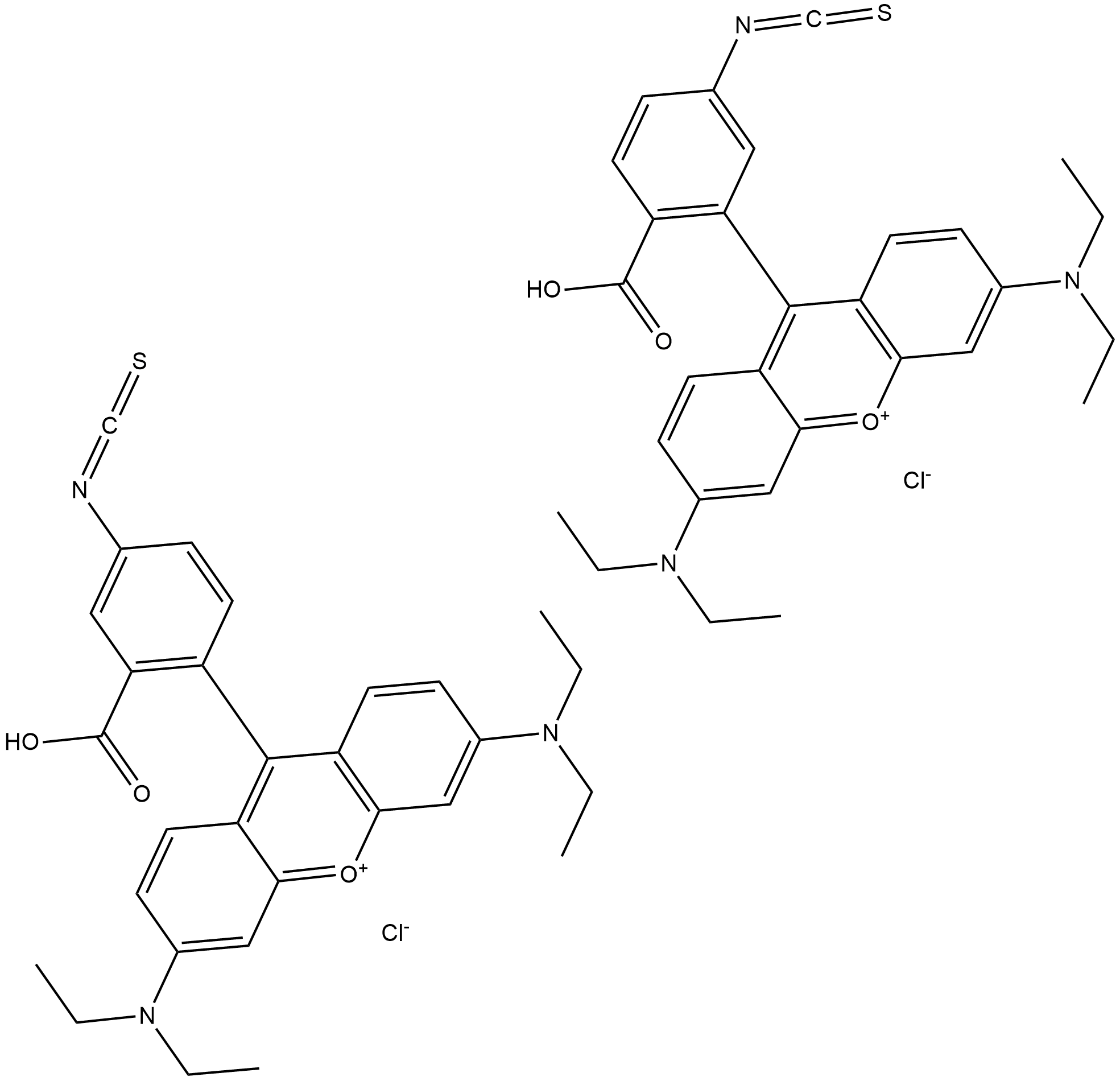
-
GC48047
Rhodamine dithenoyl hydrazide
A fluorescent and colorimetric probe for the detection of ferric iron

-
GC44907
S-NEPC
Cytochrome P450 metabolites of arachidonic acid, such as 11(12)-EpETrE and 14(15)-EpETrE have been identified as endothelium derived hyperpolarizing factors with vasodilator activity.

-
GC41219
S-Phenylsulfonylcysteine
S-Nitrosylation reactions regulate protein function and mediate nitrosative stress.

-
GC44876
SBFI AM
SBFI AM ist ein selektiver Na+-Fluoreszenzindikator.

-
GC63186
SEluc-2
SEluc-2 ist eine niedermolekulare Sonde, die auf dem GlÜhwÜrmchen-Luciferin basiert.
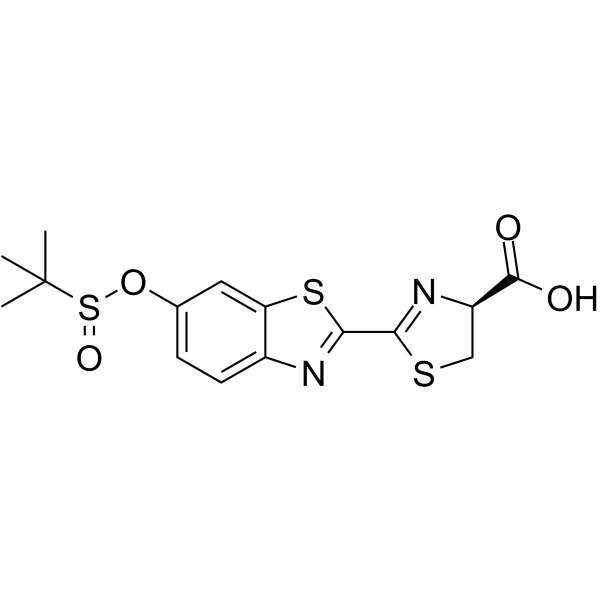
-
GC49723
SenTraGor™ Cell Senescence Reagent
A cellular senescence detection reagent

-
GC44909
SNOB 1 Reagent
SNOB 1 Reagent is a biotinylated probe for detecting S-nitrosylated proteins in a single step.

-
GC44942
Spiro-MeOTAD
Spiro-MeOTAD is a stable and efficient hole-transport material in organic light-emitting devices and in solid-state dye-sensitized solar cells (ssDSSCs).

-
GC45571
STY-BODIPY

-
GC18565
Suc-AAP-Abu-pNA
Suc-AAP-Abu-pNA is a chromogenic peptide substrate for pancreatic elastase.
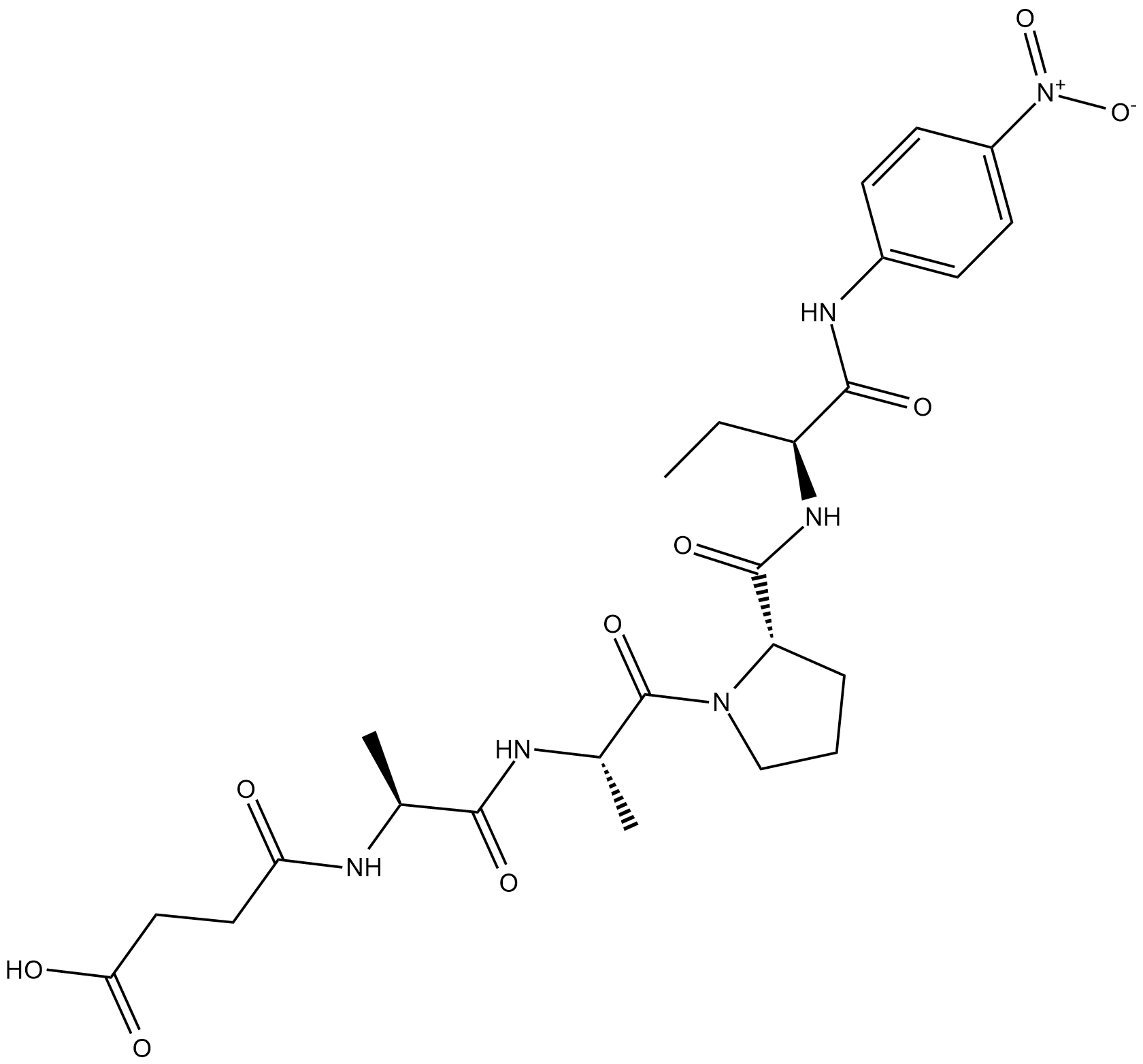
-
GC44960
Suc-AAPF-pNA
Suc-AAPF-pNA ist ein chromogener Substrat, das von Cathepsin G (Km = 1,7 mM), Subtilisinen, Chymotrypsin (Km = 60 μM), Chymase (Km = 4 mM) und Cyclophilin gespalten werden kann, jedoch nicht von neutrophilem Elastase.

-
GC52447
Suc-Leu-Leu-Val-Tyr-AMC (trifluoroacetate salt)
A fluorogenic substrate for the 20S proteasome and calpains

-
GC44963
Suc-Leu-Tyr-AMC
The calpains are a family of calcium-dependent cysteine proteases, with calpain I (μ-calpain) requiring micromolar calcium and calpain II (m-calpain) requiring millimolar calcium.

-
GA23570
Suc-Tyr-Val-Ala-Asp-pNA
Suc-YVAD-pNA, a chromogenic caspase-1 substrate.

-
GC44967
Suc-YVAD-AMC (acetate)
Suc-YVAD-AMC is a fluorogenic substrate for caspase-1.

-
GC25971
Sudan II
Sudan II (Sudan Red II, Solvent Orange 7, Color Index No: 12140, C.I. 12140) is a lysochrome (fat-soluble dye) azo dye used for staining of triglycerides in frozen sections, and some protein bound lipids and lipoproteins on paraffin sections.
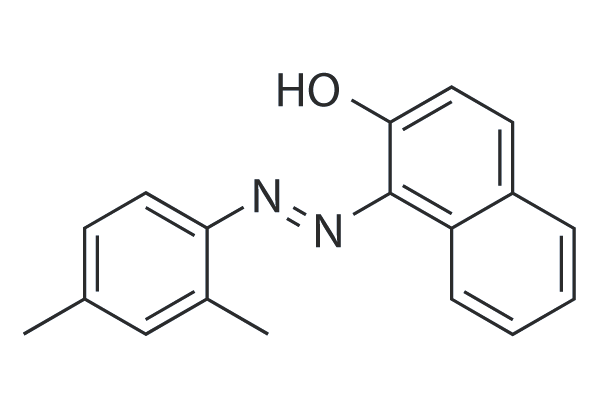
-
GC48625
Sudan Red 7B
An azo dye

-
GC59144
Sulfo-Cyanine3 alkyne
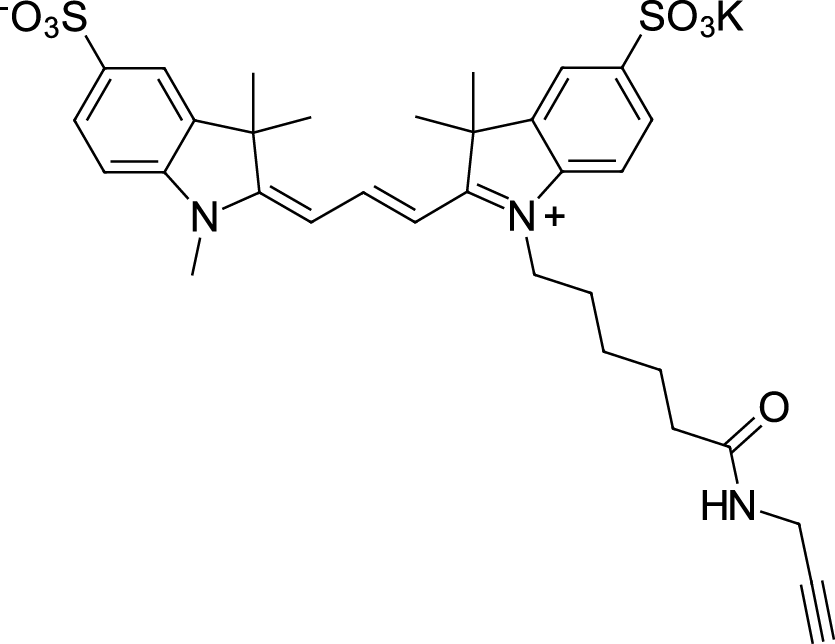
-
GC59149
Sulfo-Cyanine3 amine
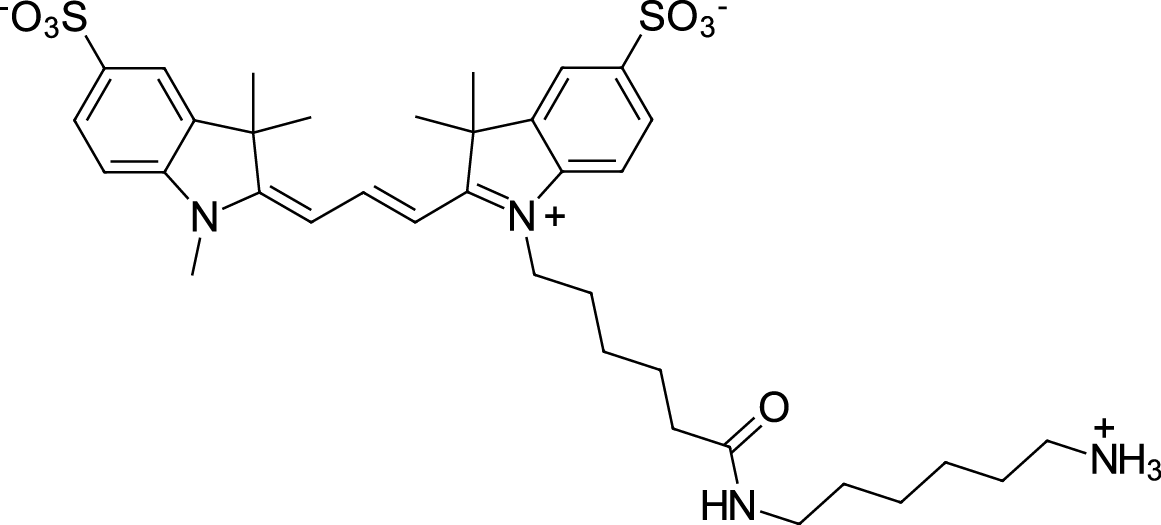
-
GC59161
Sulfo-Cyanine3 azide
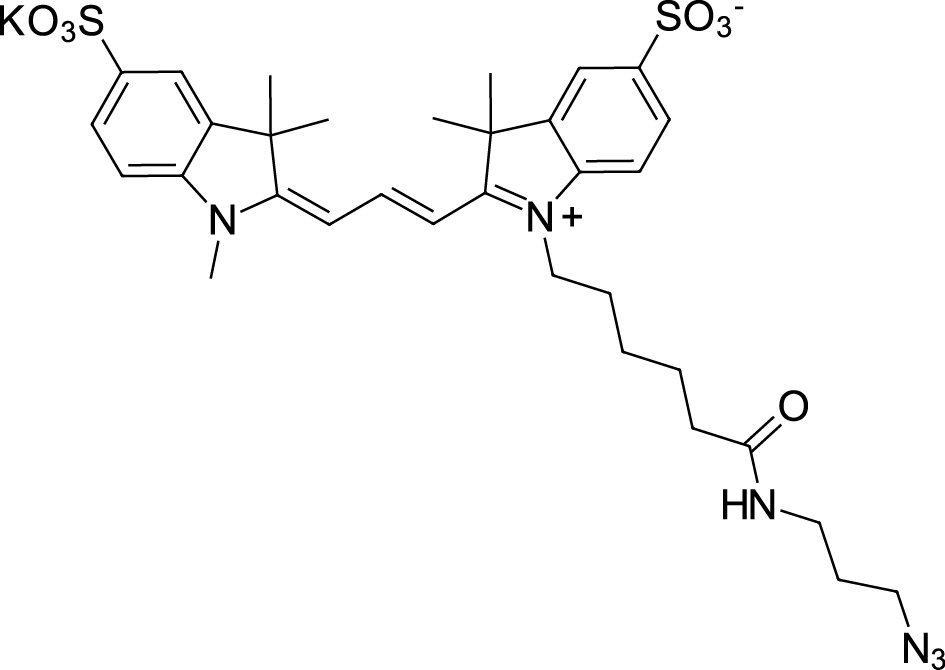
-
GC59134
Sulfo-Cyanine3 carboxylic acid
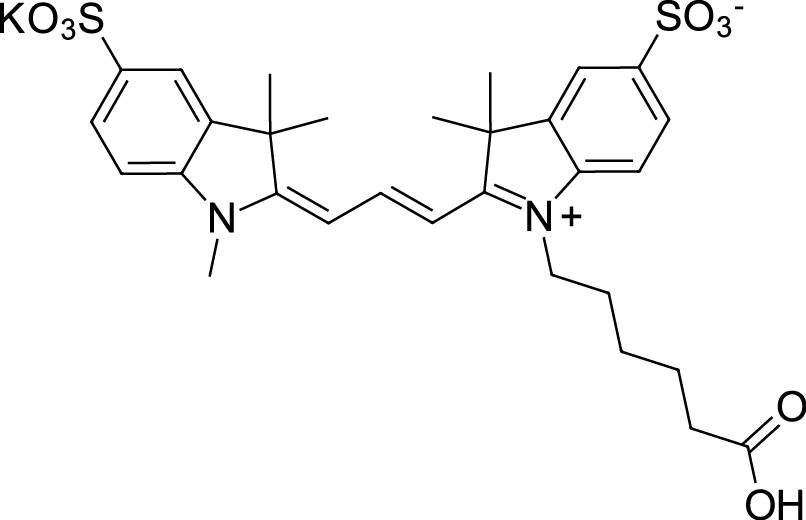
-
GC59201
sulfo-Cyanine3 DBCO
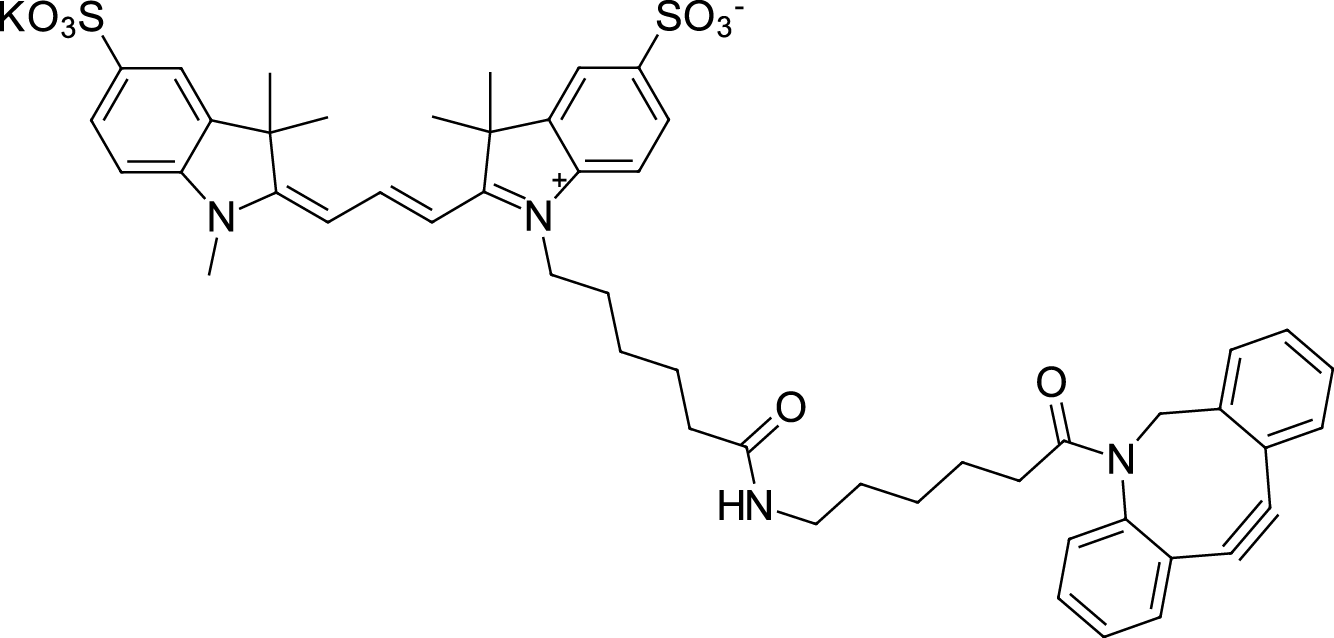
-
GC59173
Sulfo-Cyanine3 maleimide
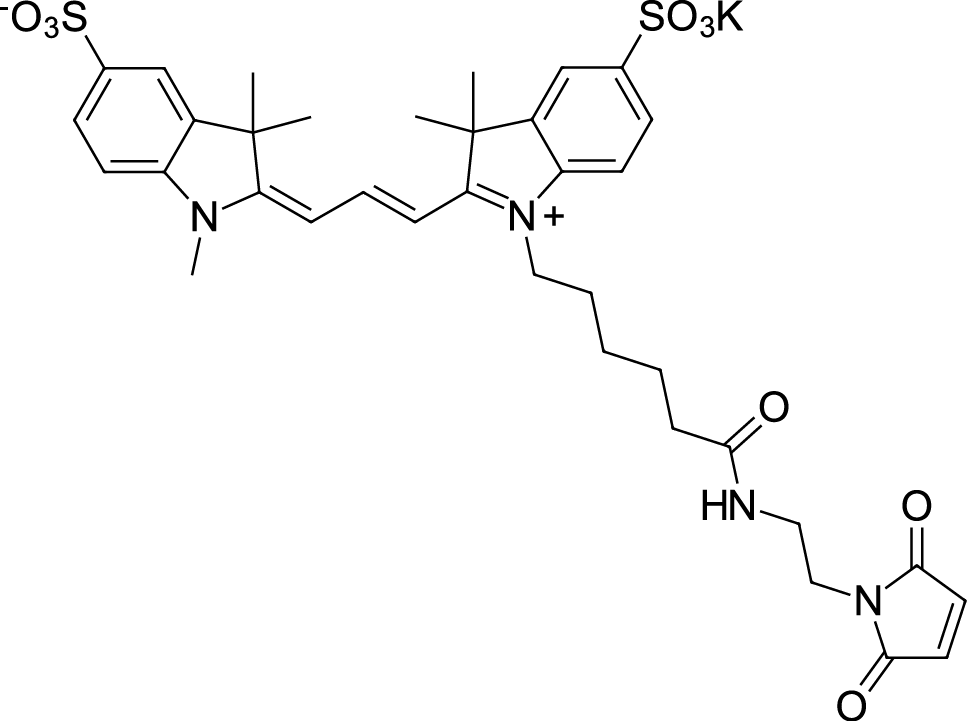
-
GC59166
Sulfo-Cyanine3 NHS ester
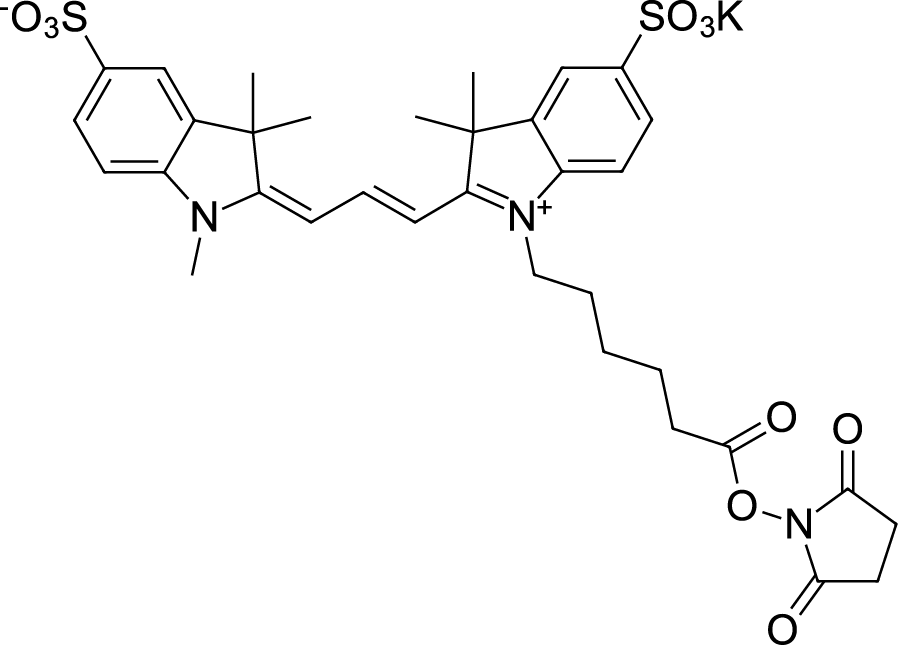
-
GC59186
Sulfo-Cyanine3 tetrazine
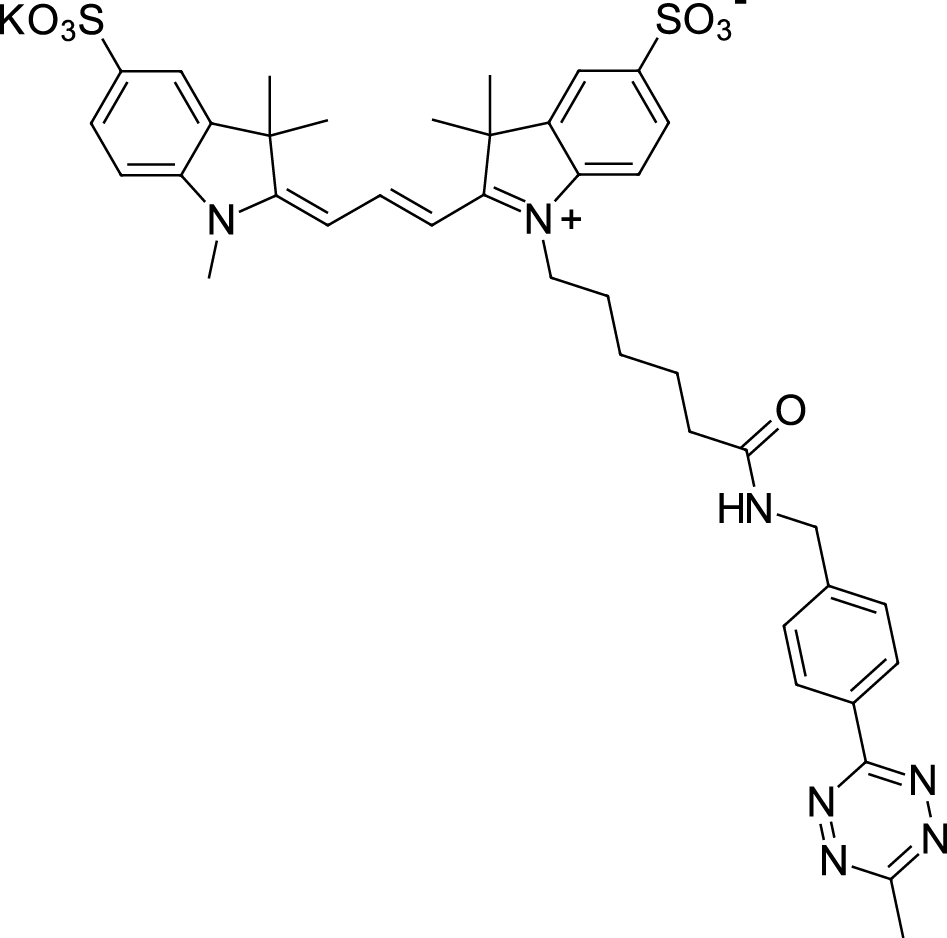
-
GC59209
Sulfo-Cyanine3.5 alkyne
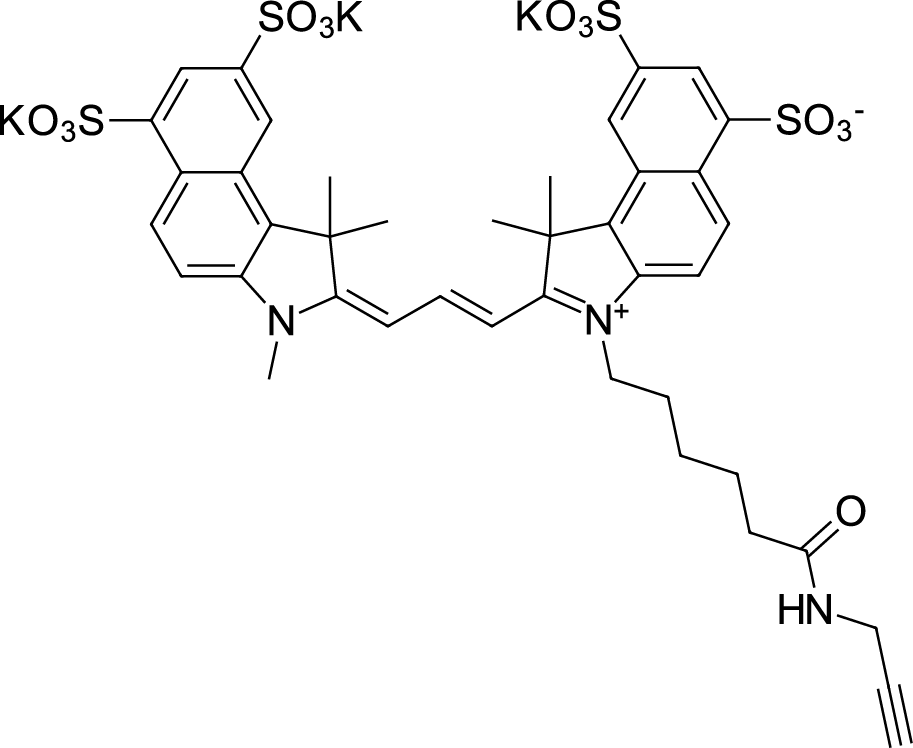
-
GC59214
Sulfo-Cyanine3.5 azide
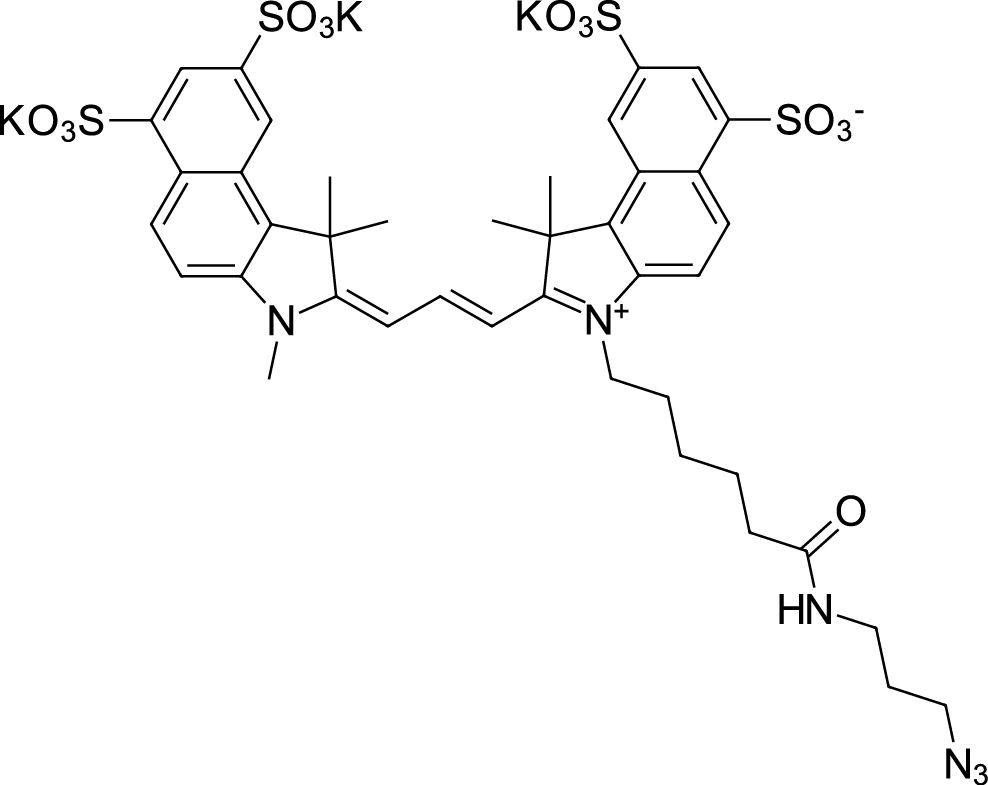
-
GC59206
Sulfo-Cyanine3.5 carboxylic acid
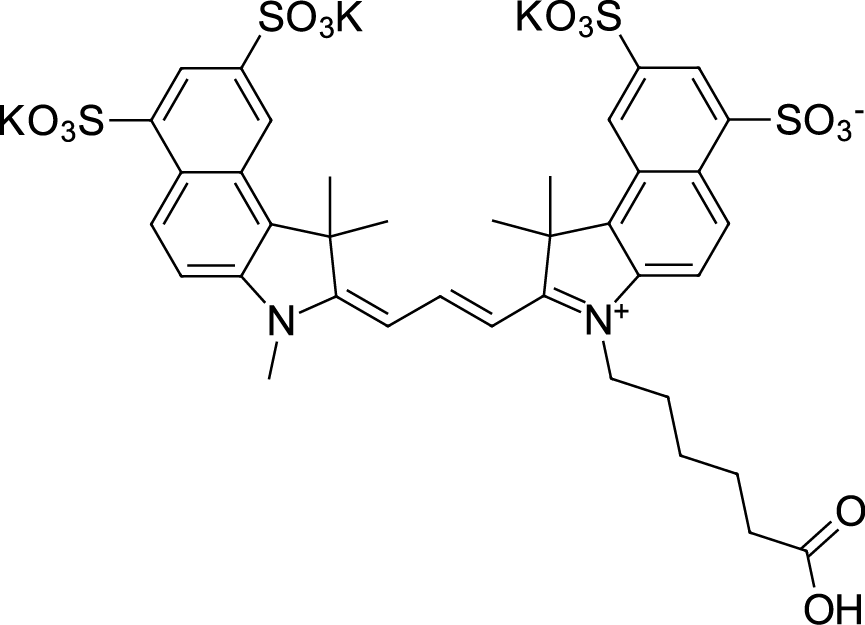
-
GC59217
Sulfo-Cyanine3.5 NHS ester
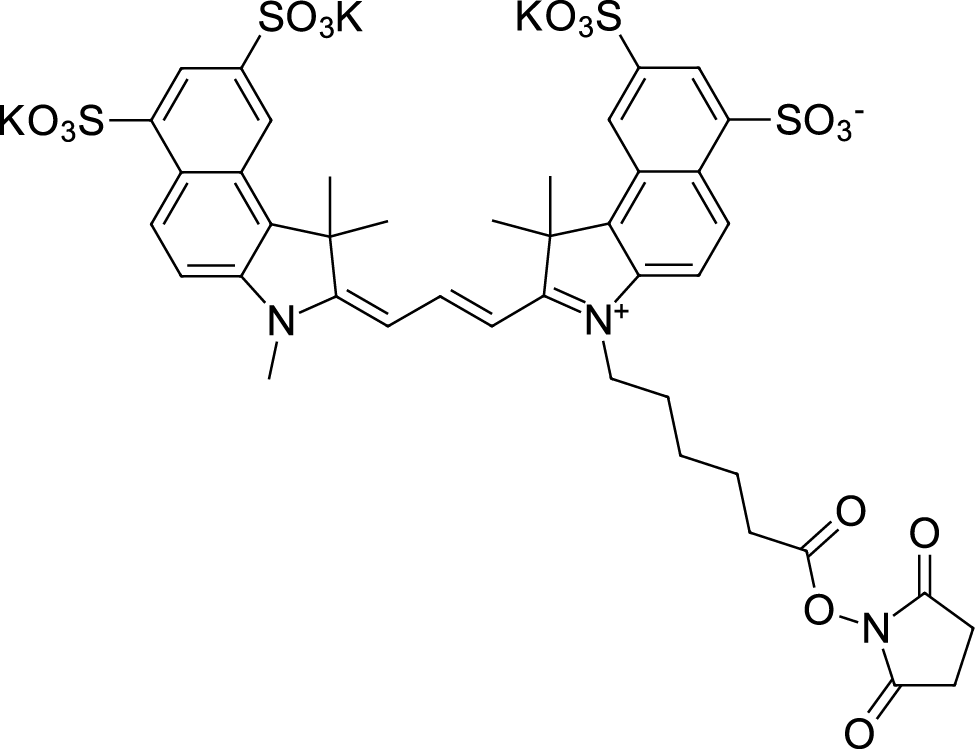
-
GC59151
Sulfo-Cyanine5 alkyne
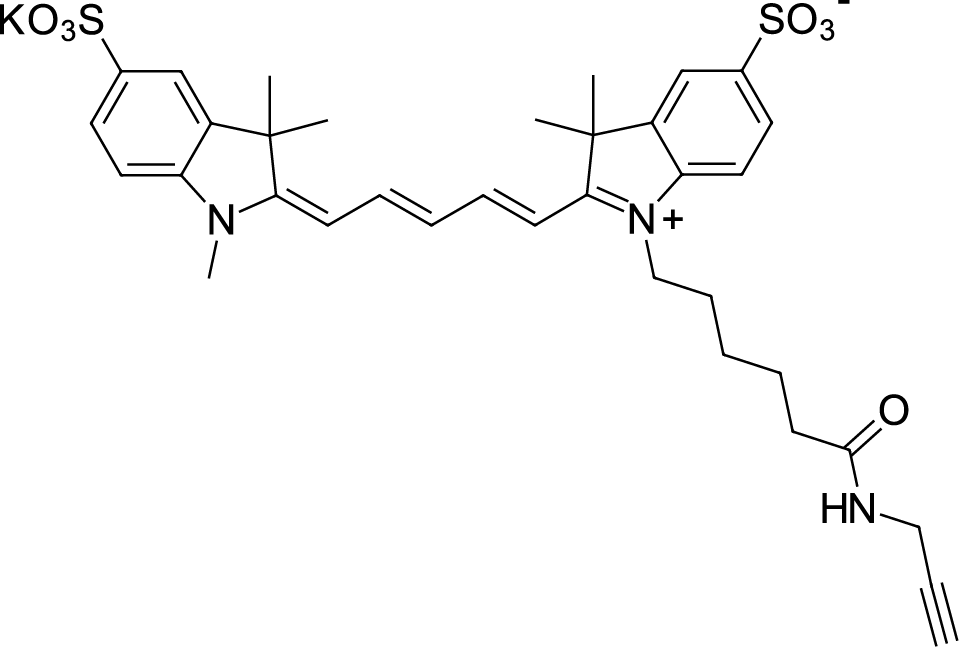
-
GC59162
Sulfo-Cyanine5 amine
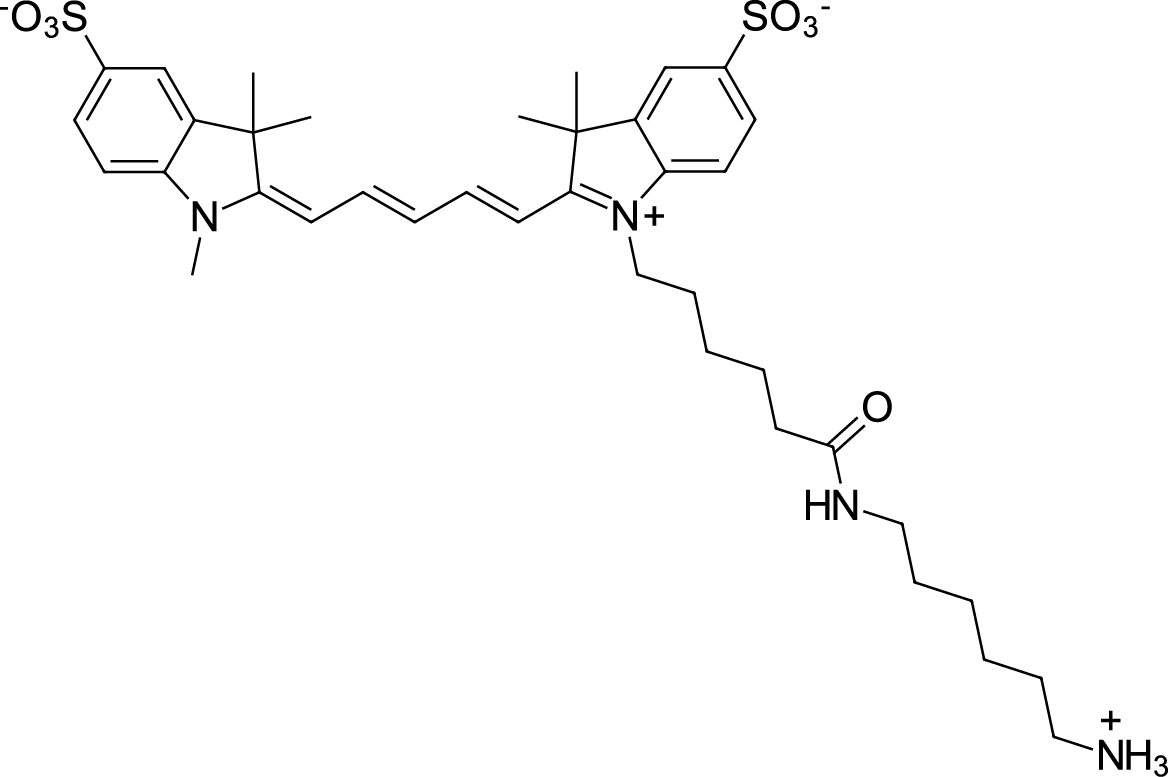
-
GC59169
Sulfo-Cyanine5 azide
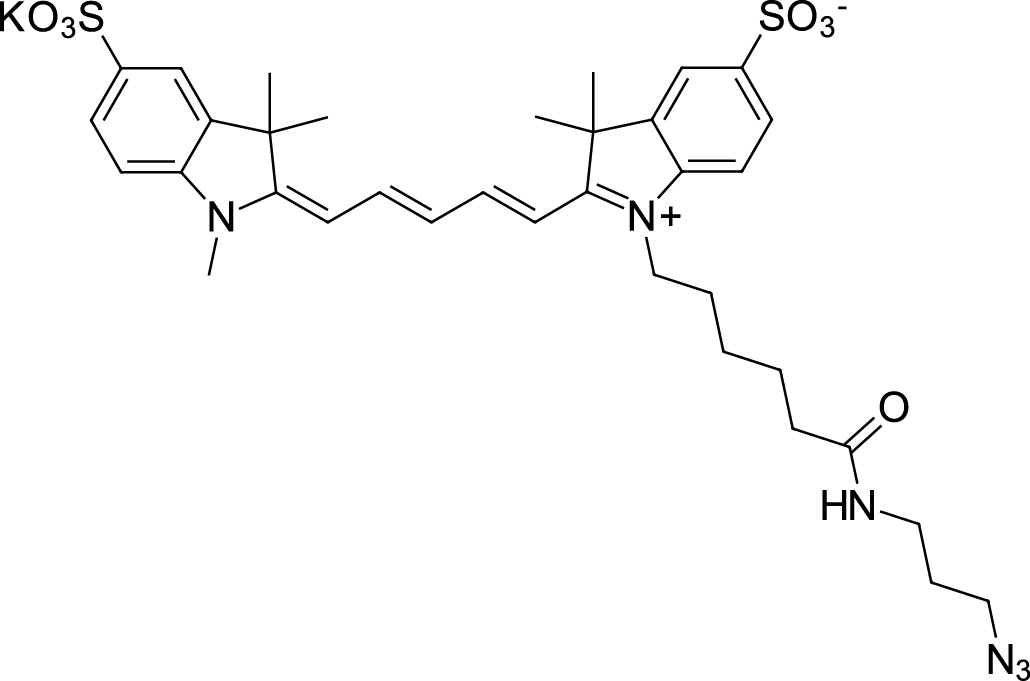
-
GC59204
Sulfo-Cyanine5 bis-NHS ester
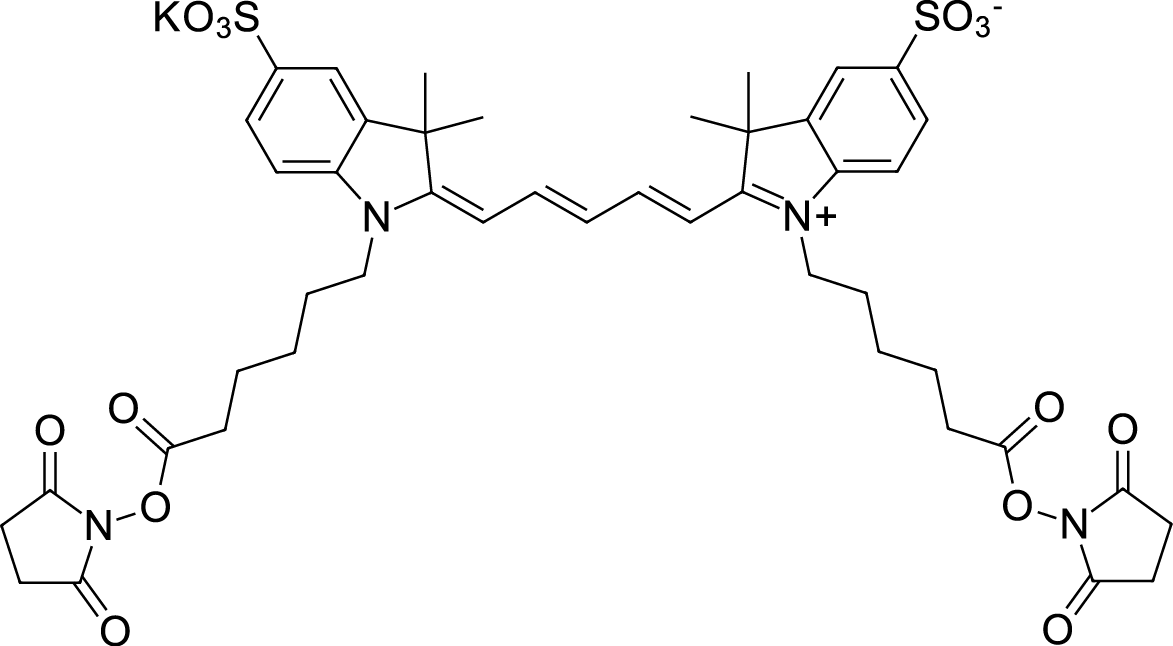
-
GC59226
Sulfo-Cyanine5 carboxylic acid
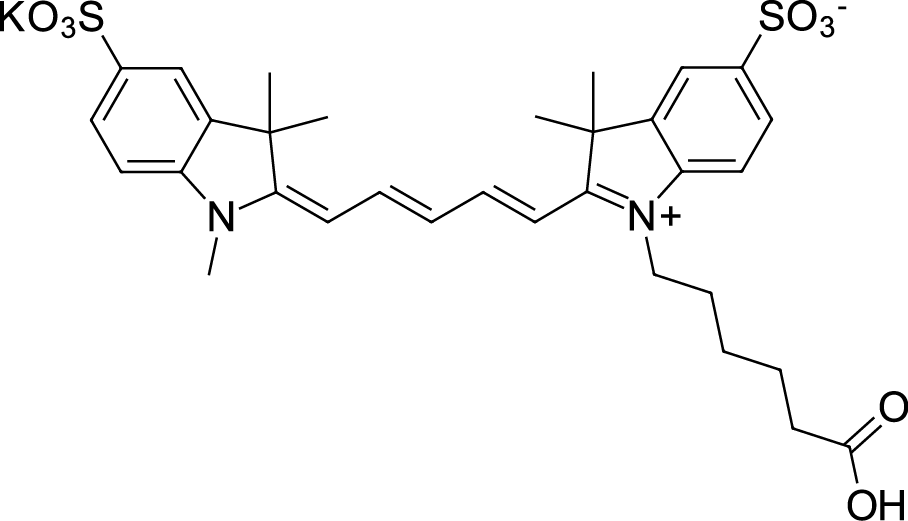
-
GC59205
sulfo-Cyanine5 DBCO
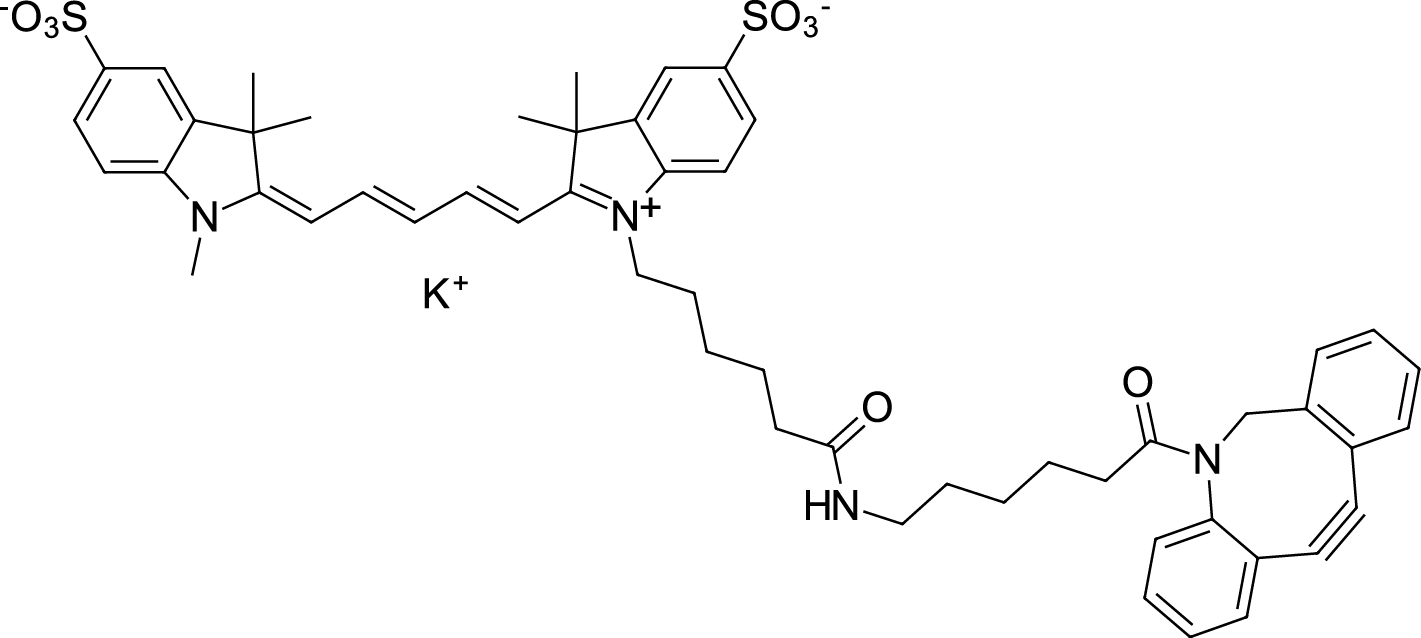
-
GC59177
Sulfo-Cyanine5 maleimide
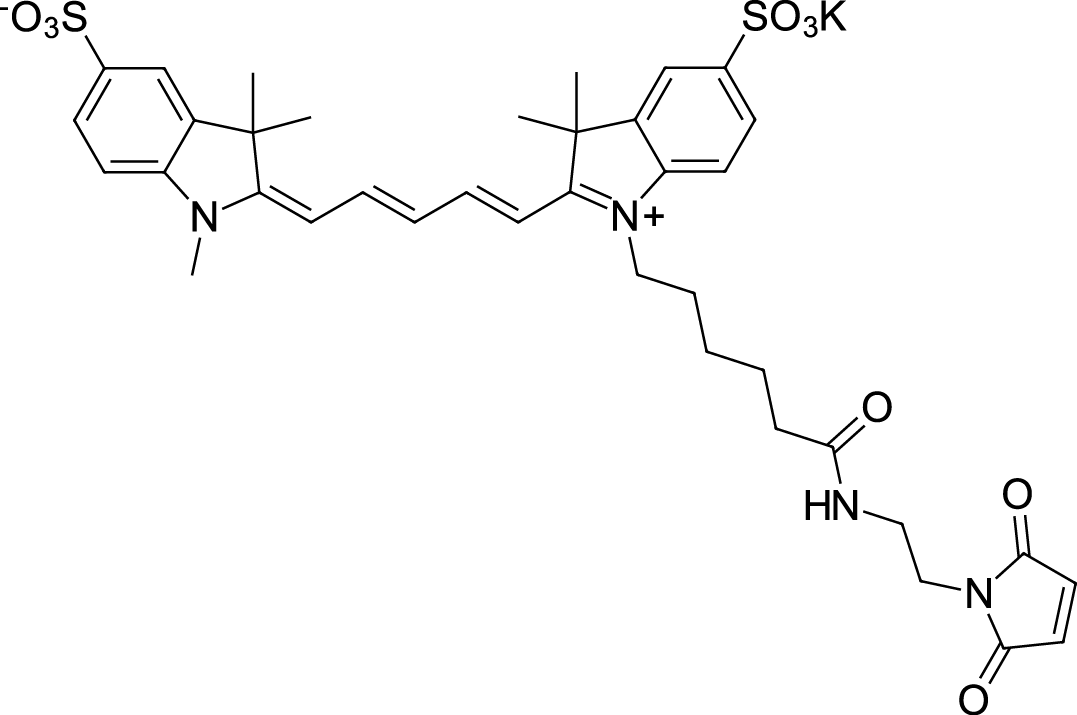
-
GC59174
Sulfo-Cyanine5 NHS ester
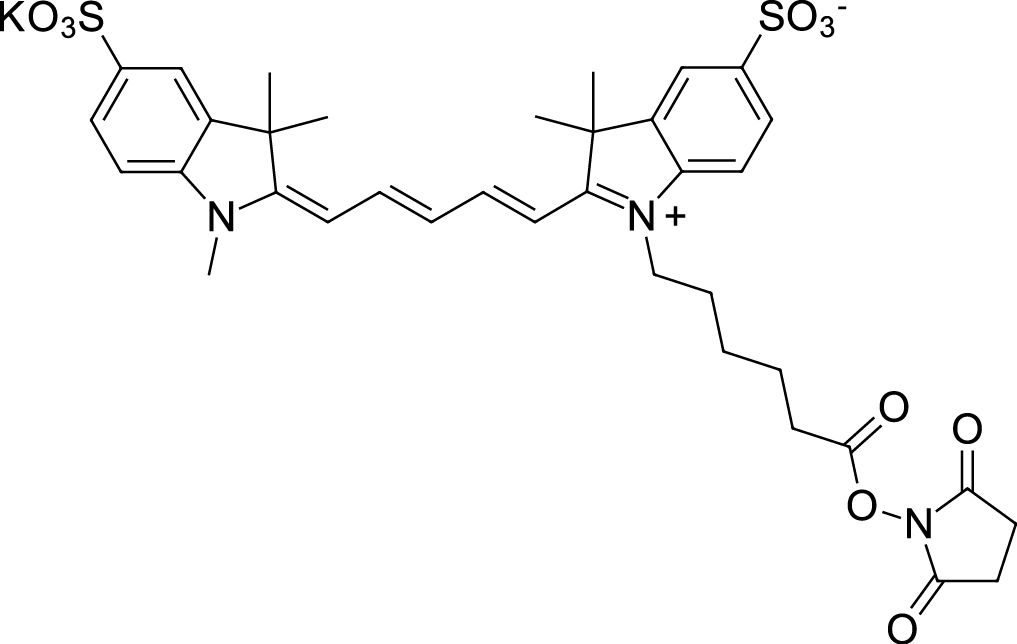
-
GC59191
Sulfo-Cyanine5 tetrazine
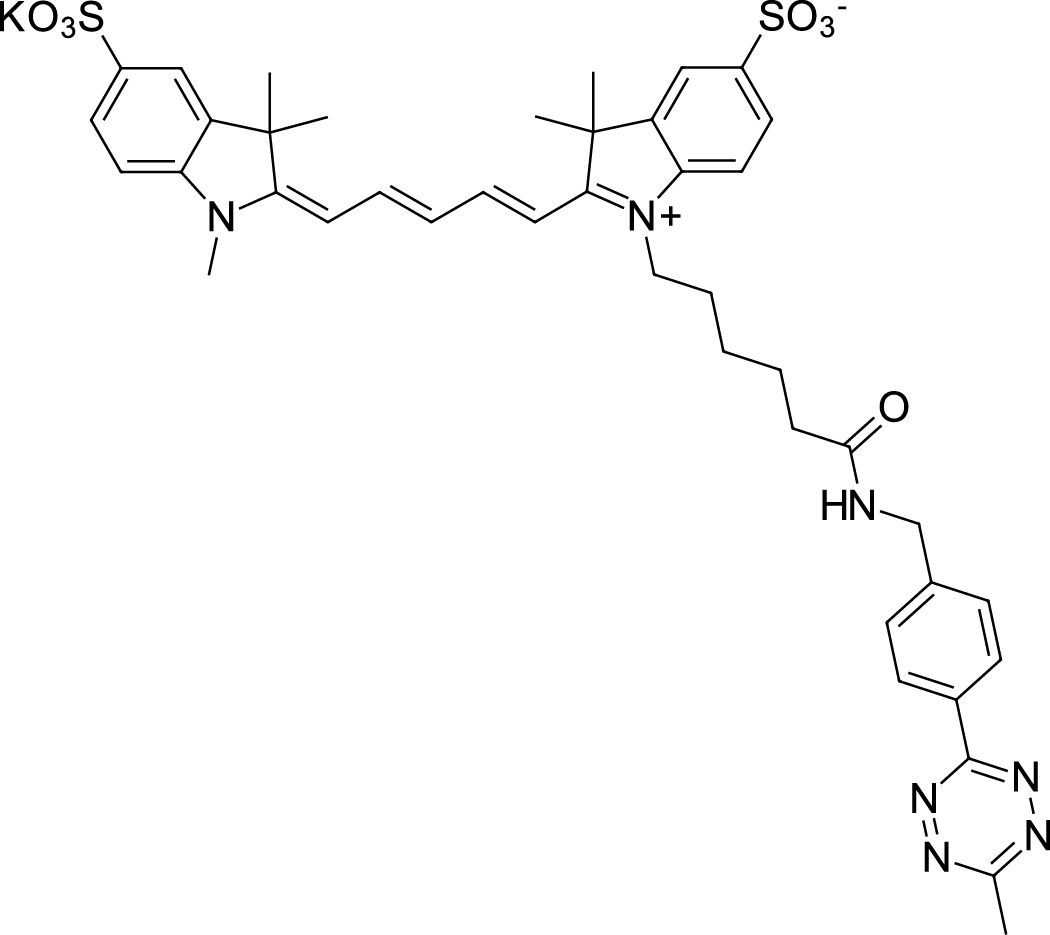
-
GC59211
Sulfo-Cyanine5-PEG3-Biotin
